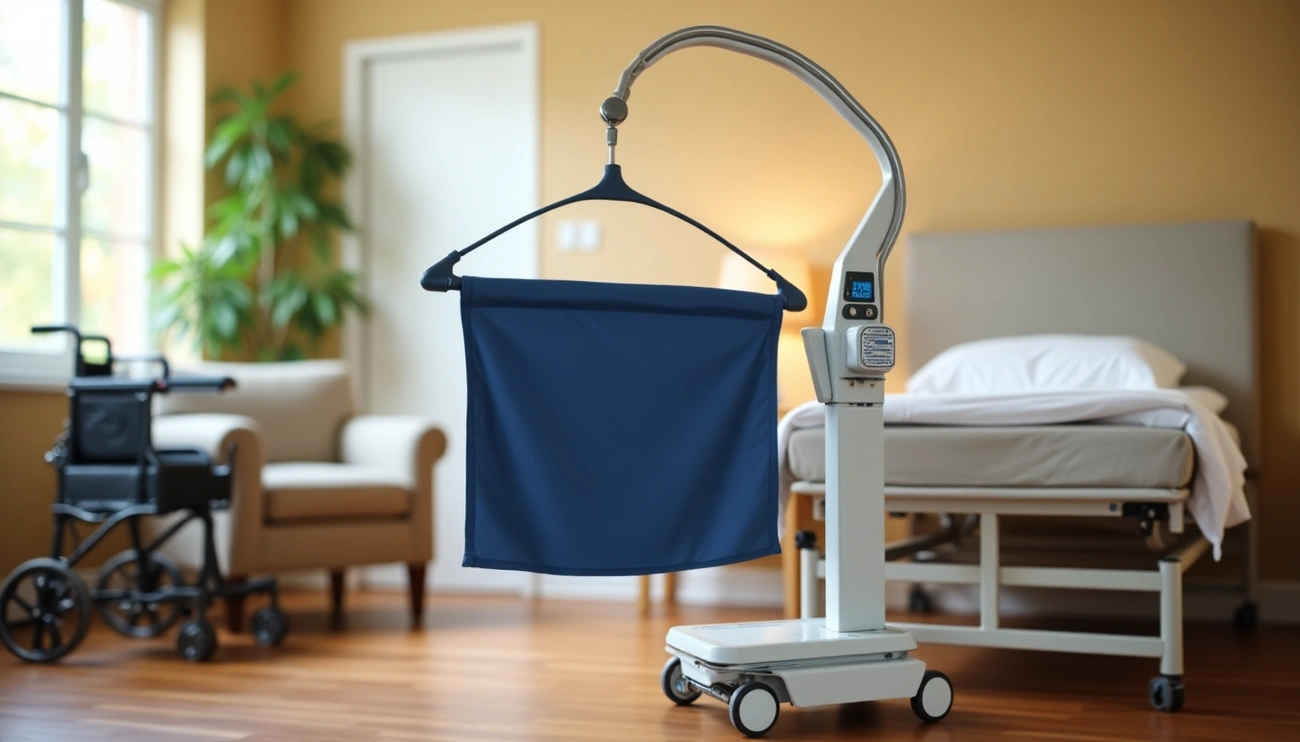Expert Guide to Aging in Place Home Modifications
Did you know that 77% of Americans over the age of 50 would prefer aging in place home modifications rather than relocating to assisted living facilities?
That’s right – according to AARP, 9 out of 10 seniors want to remain in their homes for as long as possible. However, aging at home safely often requires thoughtful adjustments to the living environment. Importantly, these home modifications for seniors don’t need to be complex or expensive. From bathroom grab bars to improved lighting for those with vision challenges (affecting about a third of seniors over 65), the right changes can dramatically improve safety and independence.
Additionally, the financial aspect is worth considering. In 2021, in-home care was actually 10.2% more expensive than assisted living – yet with proper home modifications for elderly residents, many can maintain independence with minimal outside help. Furthermore, resources exist to assist with these costs, including grants and low-interest loans from the U.S. Department of Agriculture for eligible homeowners.
In this guide, we’ll walk you through the most effective ways to create a senior-friendly home environment that supports dignity, safety, and comfort for yourself or your loved ones. Let’s get started!
Bathroom, Kitchen, and Bedroom Modifications
Creating safer living spaces begins with targeting the rooms we use most frequently. The bathroom, kitchen, and bedroom each present unique challenges for seniors but can be modified to significantly enhance safety and accessibility.
In the bathroom, falls are a primary concern, with bathrooms being one of the most frequent sites of falls for older adults. Low-threshold walk-in showers are particularly beneficial as they eliminate the need to step over a high ledge, decreasing fall risk upon entry and exit. Adding textured surfaces to bathroom floors provides additional grip, especially when wet. Strategically placed grab bars are essential safety features—install them near the toilet and around the shower area. For optimal security, vertical grab bars should be positioned 39-41 inches above the floor, while horizontal bars work best at 33-36 inches.
Kitchen modifications focus on improving accessibility and reducing strain. Lowering countertop heights to 28-30 inches accommodates wheelchair users. Pull-out shelving eliminates the need for excessive reaching or bending. Widening doorways to at least 36 inches ensures proper clearance for mobility aids. For flooring, non-slip materials are crucial in areas prone to spills, particularly near sinks and stoves.
Bedroom safety involves creating clear pathways and proper lighting. Night lights with motion sensors can illuminate paths to the bathroom without disorienting seniors. The ideal bed height should be between 20-23 inches from the top of the mattress to the ground. Consider adding bed rails for support when getting in and out of bed. Moreover, keeping frequently used items within easy reach reduces accident risks.
Throughout all rooms, proper lighting is essential. Under-cabinet lighting in the kitchen illuminates work areas, while motion-activated lighting eliminates the need to search for switches in the dark. Consequently, these thoughtful modifications can transform your home into a safer environment that supports independence and dignity.
Living Room and Entryway Safety Upgrades
The living room and entryway are high-traffic areas where over half of all falls at home occur. Making these spaces safer requires thoughtful modifications that balance accessibility with comfort.
First, examine your living room for potential tripping hazards. Remove boxes, newspapers, electrical cords, and phone cords from walkways. Position furniture—especially low coffee tables—away from walking paths, ensuring at least three feet of maneuverable space throughout corridors. For those using mobility aids, proper furniture arrangement becomes even more critical, as chairs and sofas should be at heights that allow easy transitions.
Flooring presents another significant safety concern. Secure loose rugs with double-faced tape or non-slip backing—or better yet, remove them entirely. Promptly repair loose wooden floorboards and carpeting. Consider replacing carpeting with smoother options like hardwood, ceramic tile, or vinyl to facilitate wheelchair movement.
For entryways, doorway width is crucial for accessibility. The Americans with Disabilities Act (ADA) recommends wheelchair-accessible doorways be at least 32 inches wide. If completely widening doorways isn’t feasible, installing offset or “Z” hinges can add approximately 1.5-2 inches of clearance without major construction.
Door hardware also deserves attention, primarily for those with arthritis or limited grip strength. Replace traditional doorknobs with lever-style handles, which require 50% less effort to operate. These handles can be manipulated with a forearm or elbow instead of requiring a twisting motion. Studies indicate seniors using lever handles reported 30% less hand strain.
For additional entryway safety, install secure handrails on both sides of front stairways. Ensure all exterior walkways are at least 36 inches wide, slip-resistant, and well-lit. Replace traditional thresholds with zero-threshold entryways to eliminate tripping hazards.
Throughout these spaces, store frequently used items at waist level or within easy reach. Obviously, immediately clean spilled liquids or food to prevent slips.
Special Considerations for Memory and Vision Challenges
Visual and cognitive changes often require specific aging in place home modifications beyond standard safety upgrades. Primarily, high-contrast colors serve as effective visual cues for seniors with diminishing vision, helping them navigate spaces more safely.
For individuals with vision impairment, contrast between surfaces is crucial. A dark countertop against a light floor helps define boundaries, reducing accident risks. Similarly, painting doors and door frames in contrasting colors makes them easier to identify and helps determine whether doors are open or closed. Research shows that older adults paid more attention to doors with red-black color combinations, which attracted their attention more quickly than standard white doors.
Strategic color placement serves multiple purposes in home modifications for elderly residents:
- Toilet seats contrasting with the bowl and floor
- Light switches differing from wall colors
- Handrails and faucets contrasting with bathroom surfaces
- Door handles standing out against doors
- Dishes contrasting with tablecloths and food
Notably, certain patterns should be avoided as they can cause confusion. Patterned carpets might appear as uneven ground, dark mats may look like holes, and shiny surfaces or mirrors can disorient someone with dementia.
For memory challenges, clear labeling represents an essential home modification for seniors. Large-print labels with contrasting colors help identify items and locations. Combining words with pictures provides additional memory support, especially for those with cognitive decline.
Wandering prevention requires specific modifications. Installing stop signs on doors, using smart doorbells that chime when doors open, and securing outdoor areas with fencing can significantly enhance safety. Some families find success with door knob covers or visual barriers like black tape creating a threshold that serves as a perceptual boundary.
Through these thoughtful modifications, aging at home becomes more manageable for those facing memory and vision challenges, supporting independence while maintaining safety.
Conclusion
Creating a senior-friendly home proves essential for anyone looking to age gracefully in their own space. Throughout this guide, we’ve examined critical modifications that support independence while maintaining safety. Bathrooms, kitchens, and bedrooms all benefit from thoughtful changes like grab bars, proper lighting, and accessible storage options. Additionally, living rooms and entryways become significantly safer with the removal of tripping hazards and installation of supportive features like lever door handles.
Above all, addressing specific challenges related to vision and memory allows seniors to navigate their homes with confidence. Simple adjustments such as high-contrast colors and clear labeling make a remarkable difference in daily functionality. These modifications need not be overwhelming or implemented all at once. Instead, we can prioritize changes based on specific needs and complete them gradually.
The cost of these modifications certainly deserves consideration, yet many resources exist to help offset expenses. Grants, loans, and tax deductions may reduce financial burden while investing in long-term independence. Therefore, we should view these changes not as expenses but rather as investments in quality of life and personal autonomy.
Finally, aging in place represents more than just physical safety—it embodies dignity, comfort, and connection to familiar surroundings. When we create homes that accommodate changing needs, we empower ourselves or our loved ones to maintain independence for as long as possible. The effort invested in these modifications ultimately delivers priceless rewards: peace of mind, reduced injury risk, and the joy of remaining in a beloved home.
FAQs
Q1. What are some essential home modifications for aging in place? Essential modifications include installing grab bars in bathrooms, using non-slip flooring, widening doorways to 36 inches, replacing round doorknobs with lever handles, and ensuring proper lighting throughout the home. These changes enhance safety and accessibility for seniors.
Q2. How can I make my kitchen more senior-friendly? To make your kitchen more accessible, consider lowering countertop heights to 28-30 inches, installing pull-out shelving, using non-slip flooring near sinks and stoves, and adding under-cabinet lighting. These modifications reduce strain and improve safety for seniors in the kitchen.
Q3. What are some effective ways to prevent falls in the home? To prevent falls, remove tripping hazards like loose rugs and cords, ensure clear pathways in high-traffic areas, install handrails on staircases, use night lights with motion sensors, and maintain proper lighting throughout the home. Additionally, consider installing walk-in showers with non-slip surfaces in bathrooms.
Q4. How can I accommodate vision impairments in home design? For vision impairments, use high-contrast colors to differentiate surfaces and objects. For example, use dark countertops against light floors, paint door frames in contrasting colors, and ensure light switches stand out from walls. Avoid patterned carpets that may cause confusion, and use clear, large-print labels on important items.
Q5. What modifications can help seniors with memory challenges? For memory challenges, use clear labeling with large print and pictures on cabinets and drawers. Install smart doorbells that chime when doors open to prevent wandering. Consider using visual barriers like black tape to create perceptual boundaries. These modifications can help seniors navigate their homes more safely and independently.




